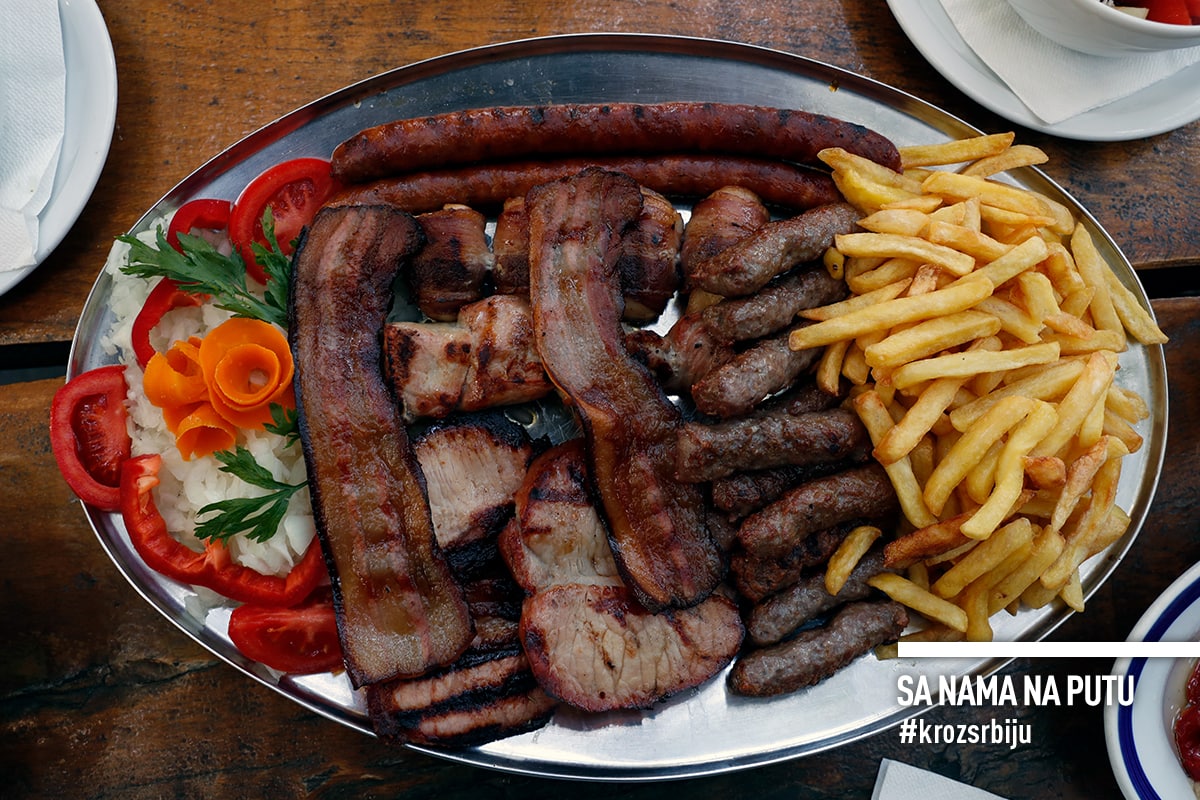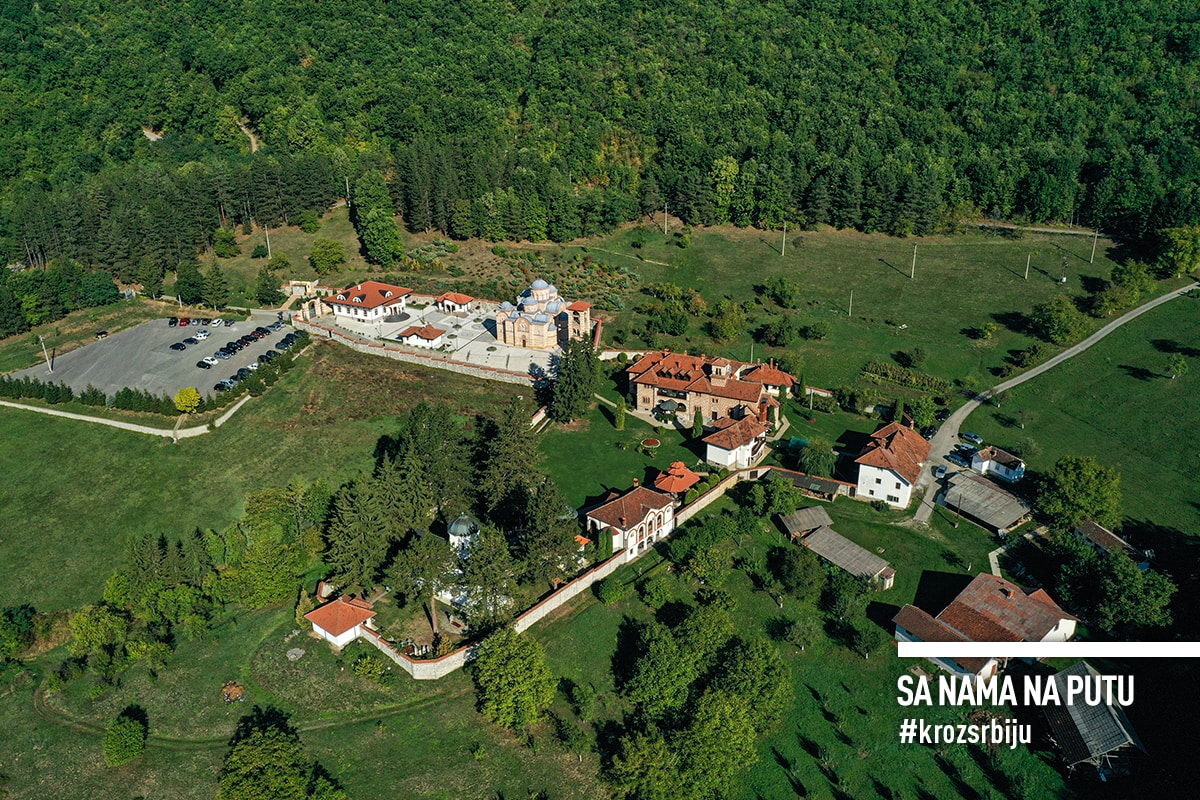Just as soon as it breaks the surface at the foot of Povlen Mountain, the river timidly vanishes to run underground for several kilometres before it resurfaces at the main spring Zelenac. Not far from there, Gradac begins to sculpt a gorge-like canyon of unusual beauty. Its course runs like this almost all the way to Valjevo where, tired of plunging down the slopes and battling the river cliffs, it gently joins the Kolubara River. Densely wooded shores hide some 70 caves. The most famous of them is Degurićka Cave, which dates back to the Ice Age, with long corridors and an abundance of speleothems. It is believed that people have lived here since ancient times. The traces date all the way back to the Paleolith. Numerous excavations and sites testify to that. Along the canyon, steep cliffs in the Brangović village, are home to the remnants of a medieval fortress from as early as the fourth century, based on the findings. Jerina’s town. It was named by the people after a fairy, a cursed Jerina, who was condemned to roam it forever. It also goes under the name Bežane. Its impenetrable walls used to be a hiding place for the people facing merciless pursuers. The “haunted” remains of the fortress can only be reached by taking a strenuous uphill climb on foot.
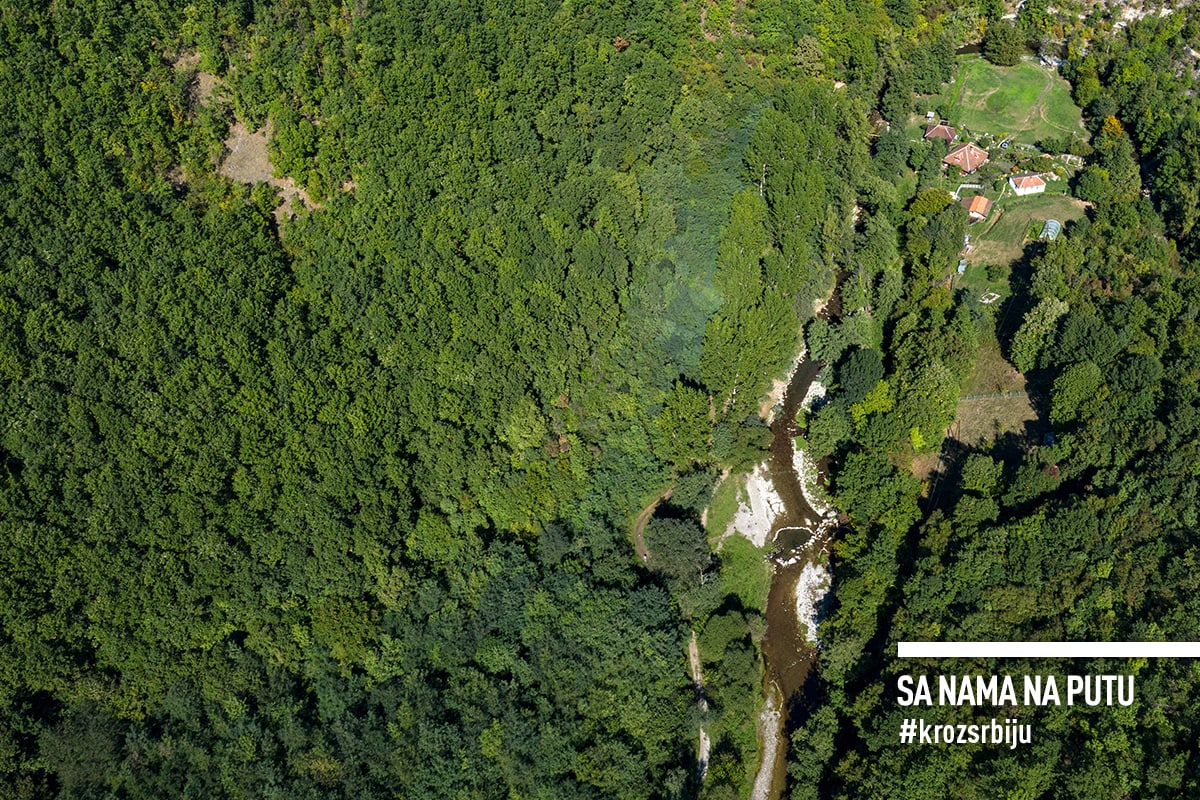
Along its entire course, Gradac selflessly gives life to lush green shores that became home to diverse flora and fauna. A settlement or two can also be found. The Gradac River Canyon is a landscape of exceptional features. Super awesome, as the young people would say today.
2. Because the ethno-restaurant can be reached jump by jump
That’s exactly what it’s called. On the right bank of Gradac, not far off from the Ćelije Monastery. We are convinced the name of the restaurant comes from the way of crossing the small bridge, which is neither wide enough nor still enough, instead, it keeps swaying, but has to be crossed to reach the ethnoecological haven. It resembles a small open-air museum, with its tide mill, cabins and plank houses, ancient tools and devices, all sorts of things from a time long ago. It’s got its own pond too. Besides the fresh trout, you can have beef and goat meat in the sač and goulash, or goat cheese for an appetizer, prosciutto and kajmak. Naturally, everything is homemade and at affordable, rural prices.
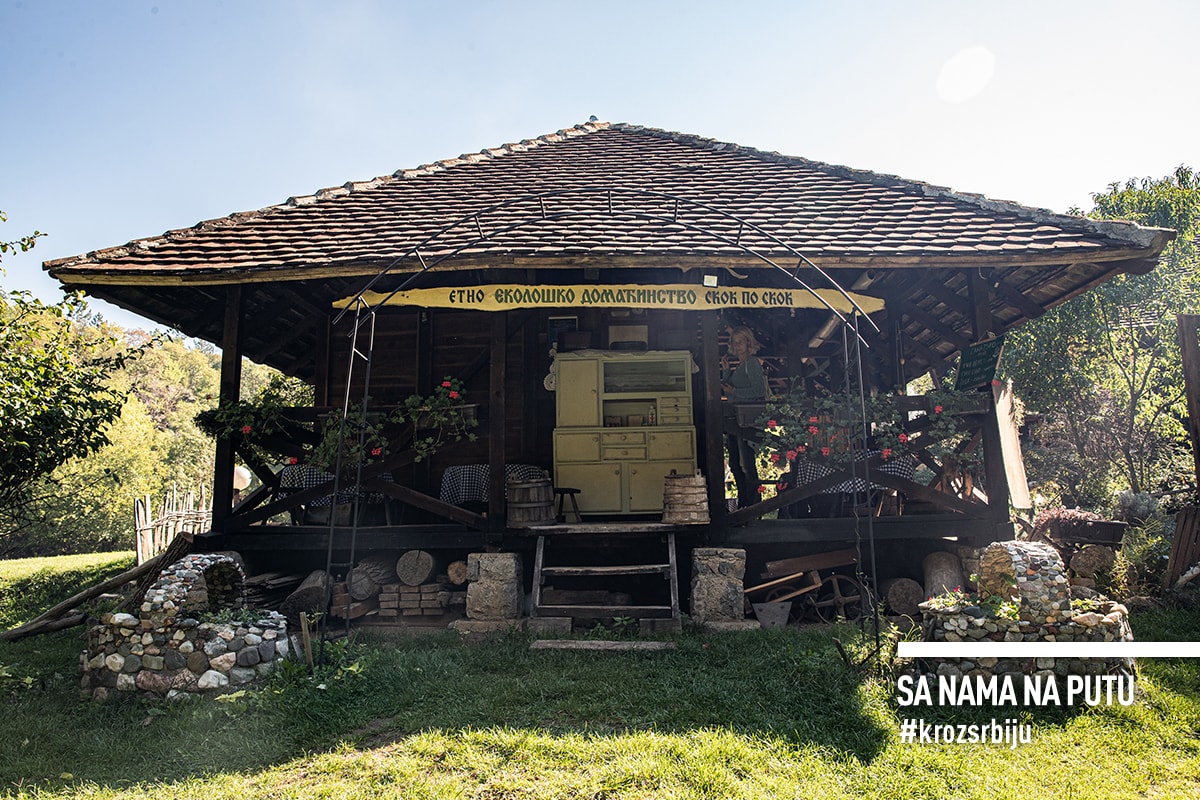
Seated at the table on the shore of Gradac, you might be delighted, if you’re lucky, by the sight of unusual guests. A company of goats and billies shows up at the bridge. It is led by the billy called the Paw, who dauntlessly albeit gracefully jumps over the logs and boldly runs up to the table to steal a few morsels. The villagers’ attempt to chase him away and drive him back to the flock is in vain. He is headstrong and keeps up his antics. A lovable horned creature, and cuddly as well.
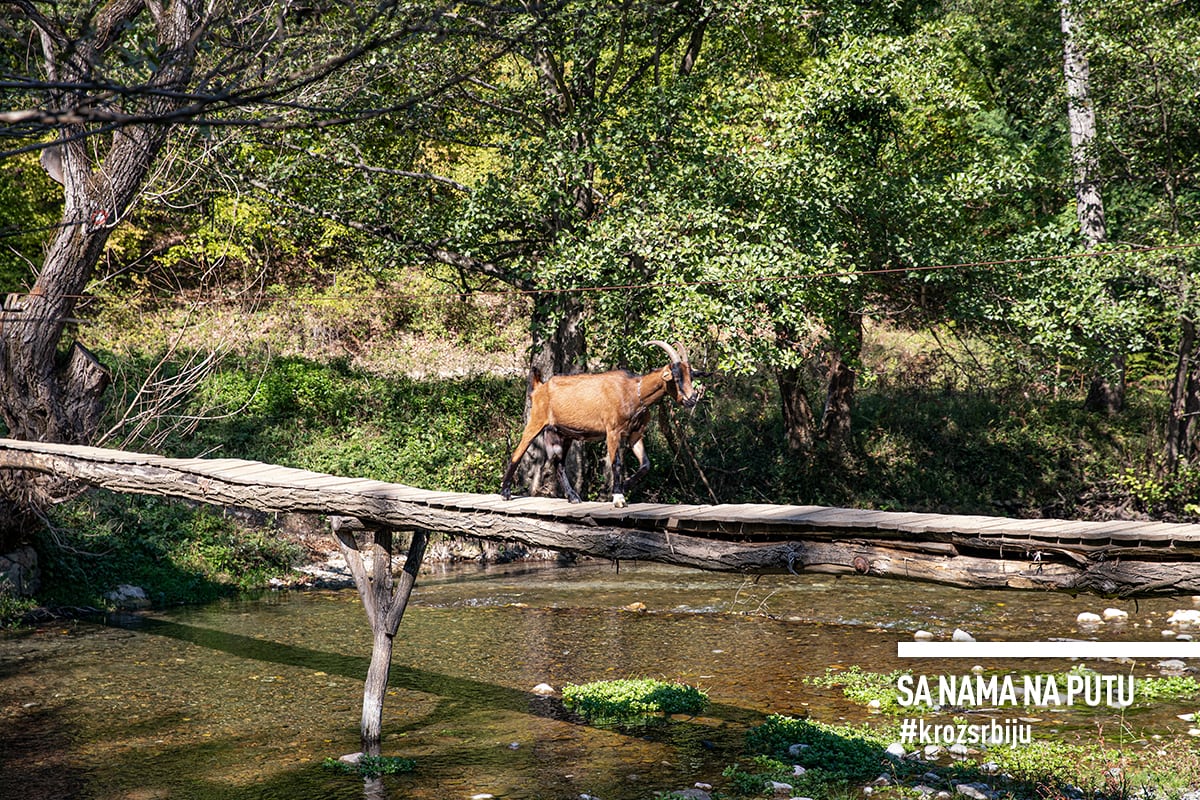
Mobile phones are laid to rest here as there is no signal. Pastoral sights and the murmur of Gradac are restful for both eyes and soul.
3. Because the Ćelije monastery kept rising from the ashes
And each time, the site became holier. It is nestled in a picturesque landscape among the slopes of the Valjevo mountains, far away from the hustle and bustle of the world, in pristine nature. It was probably named after the monastery church that was originally the size of a monastic cell (ćelija), or a cell in a cave in the surrounding rocks. The church is dedicated to the Holy Archangel Michael. Historical data about its origin are scarce. According to one account, the monastery is the patronage of King Dragutin (1276-1282), and according to another, it was built at the end of the XIV or the turn of the XV century during the reign of despot Stefan Lazarević. But the data on the patriotic past of the monastery is well known. During the Ottoman occupation, it was often demolished and burned, and its priests took part in the preparation of several uprisings and revolts. The grave of Duke Ilija Birčanin, who was buried in the monastery’s port, testifies to that past. During Karađorđe’s rule, it was used as a military hospital. Much later, in liberated Serbia, under the rule of Miloš Obrenović, the monastery was the home to one of the first schools in the Valjevo region, which was attended by the bishop, Nikolaj Velimirović. The church has never been frescoed, but it has a nine-sided bell tower, one of a kind in Serbia, the Mother Superior proudly tells us. The women’s monastery was added in 1946.
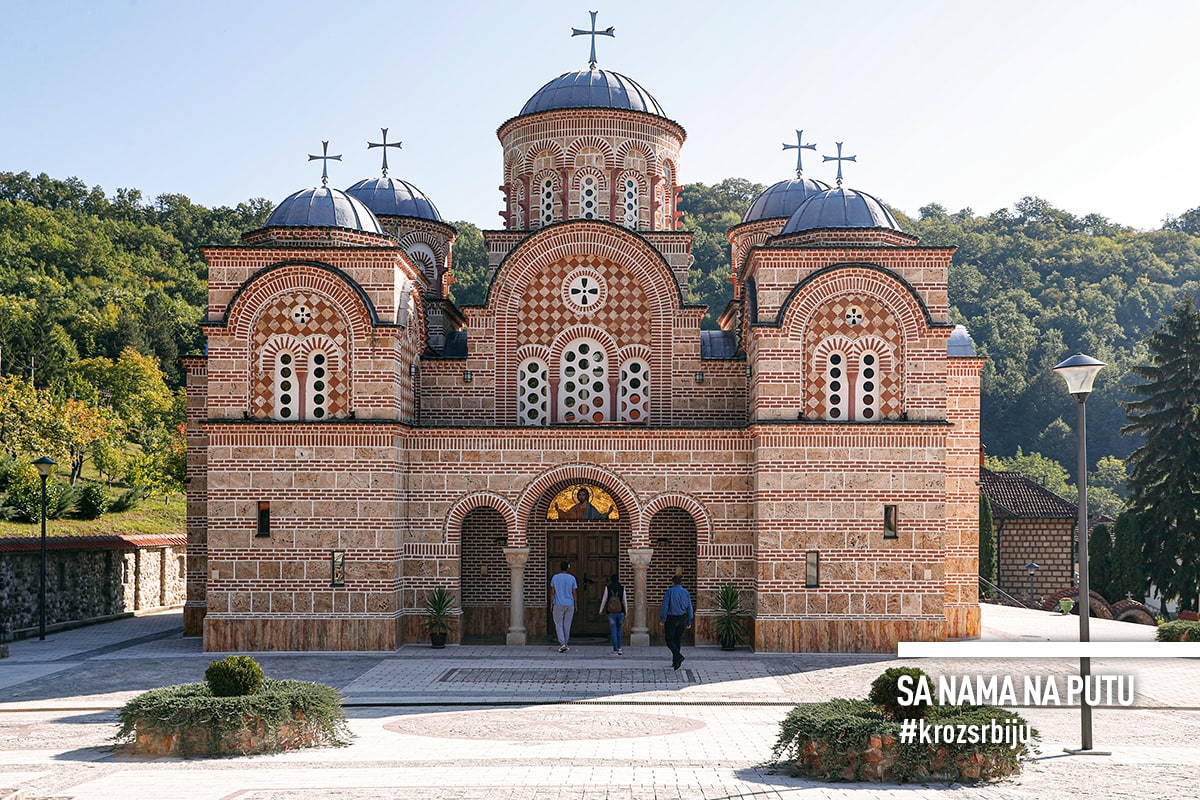
We arrive during a Sunday morning service. It is packed with people. Many approach the graceful Mother Superior, to talk to her and seek her counsel. She carefully listens to all, utters a noble word or two and invites them to refresh themselves in the dining room.
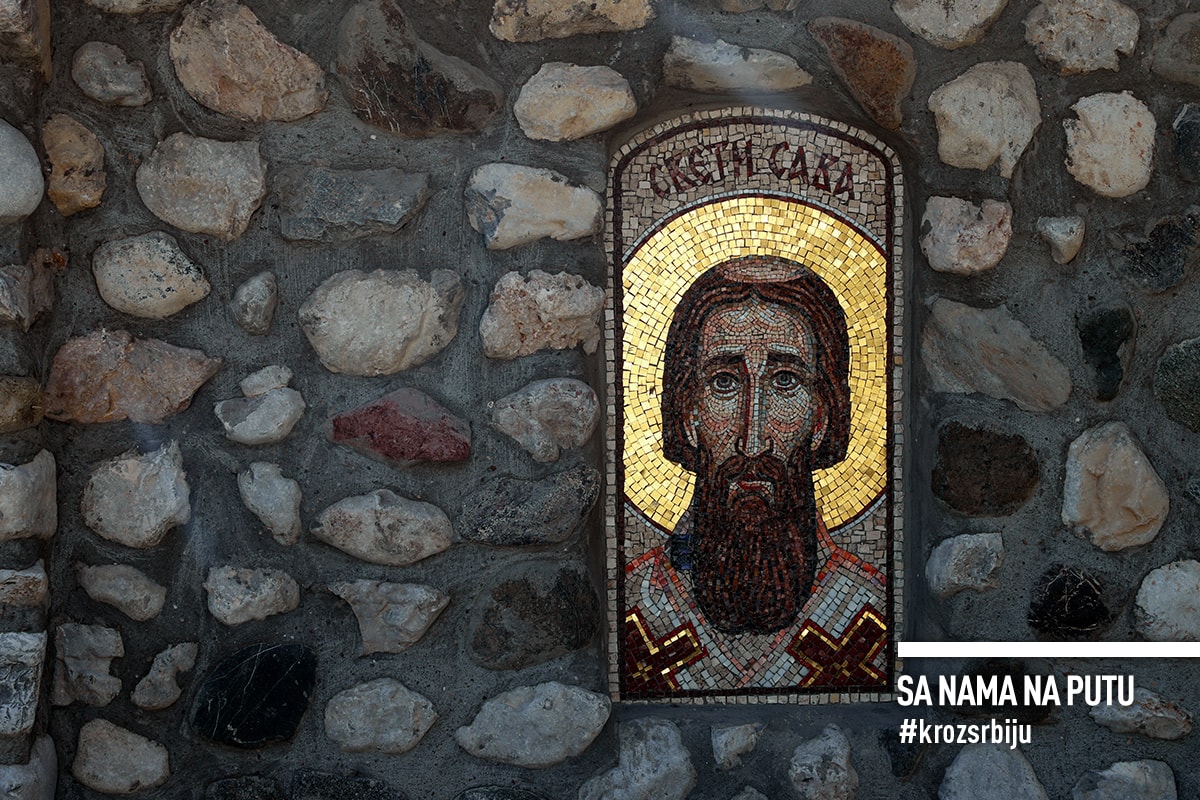
At the entrance to the monastery estate, a new three-altar temple was erected, the temple of St. Justin of Ćelije, one of the greatest theologians of the XX century, once an archimandrite of the Ćelije monastery. The vintage exterior is in the style of the Moravian-Raška school of architecture and has a freshly frescoed interior.
Only a few kilometres away is the Lelić Monastery, which holds the relics of St. Nikolaj Velimirović, with Jovanja and Pustinja Monasteries in the vicinity.
4. Because Valjevo is a city of heroes and poets
Many great men and women were born in the Valjevo area. Who should we start with not to offend anyone? Perhaps, we should start with the fearless warrior and one of Serbia’s greatest military commanders, Duke Živojin Mišić. His monument adorns the main town square. It is followed by the most beloved Serbian poetess, Desanka Maksimović, whose portrait itself is a monument to poetry, situated on another town square. There is the writer Milovan Glišić and the members of the Nenadović family – Aleksa, prota Matija, Jakov, and Ljubomir. We owe them much.
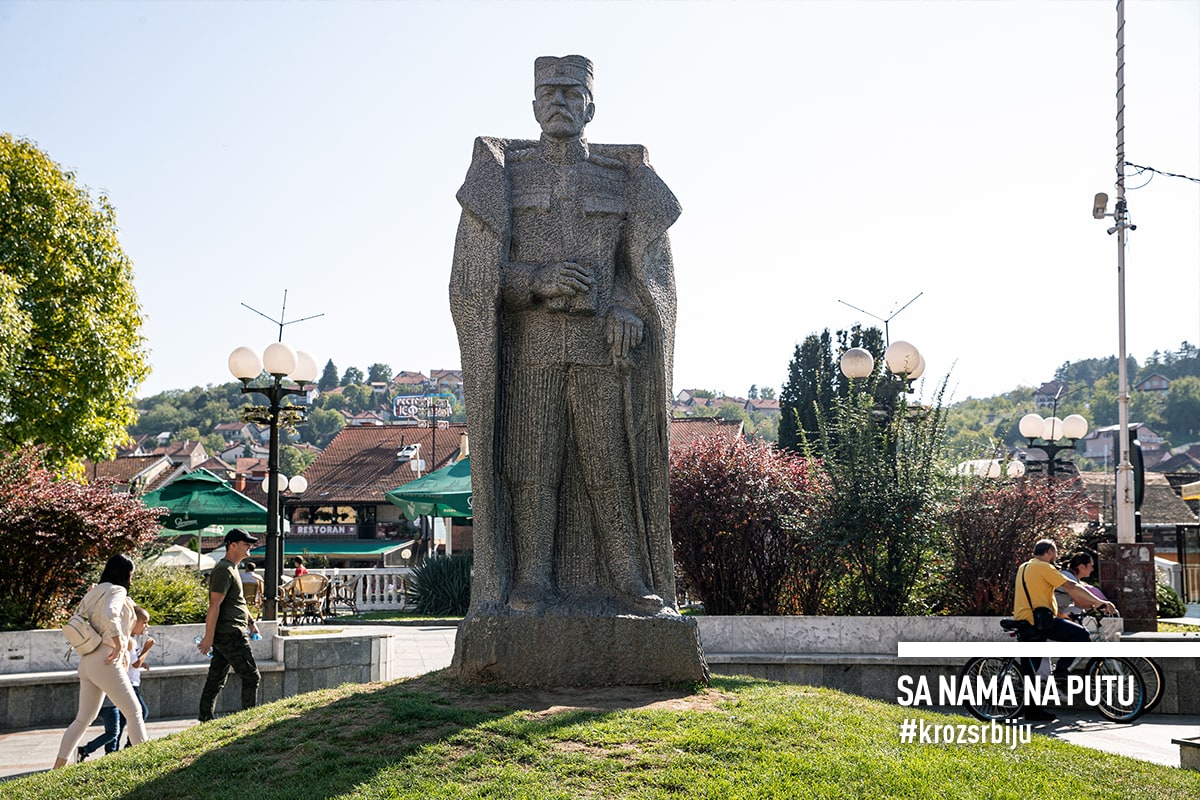
Here is where Kolubara River starts murmuring. Its riverbed is currently dry, but sometimes it can also reach the flood stage. The banks are lively and the offer is diverse. Down from the Kolubara bridge, there is a memorial to the execution grounds. This is where, on 4 February 1804, Serbian leaders Aleksa Nenadović and Ilija Birčanin were killed with yatagans by Dahijas. An unusual, reddish monument commemorates the notorious Slaughter of the Knezes. An antique, splendid edifice of the National Museum sits behind it. Not far away is the oldest preserved building, Muselim’s konak, built at the end of the XVIII century. It was built for the needs of Muselim – the then Turkish chief of the Valjevska nahiyah. The decapitated heads of the Valjevo dukes were put on display on its roof. As in the case of the Skull Tower in Niš, they failed to serve their purpose which was to intimidate the people, instead, they fueled the nation’s anger and hastened the uprising. The building was also used as a school and later converted into a satellite department of the Valjevo National Museum.
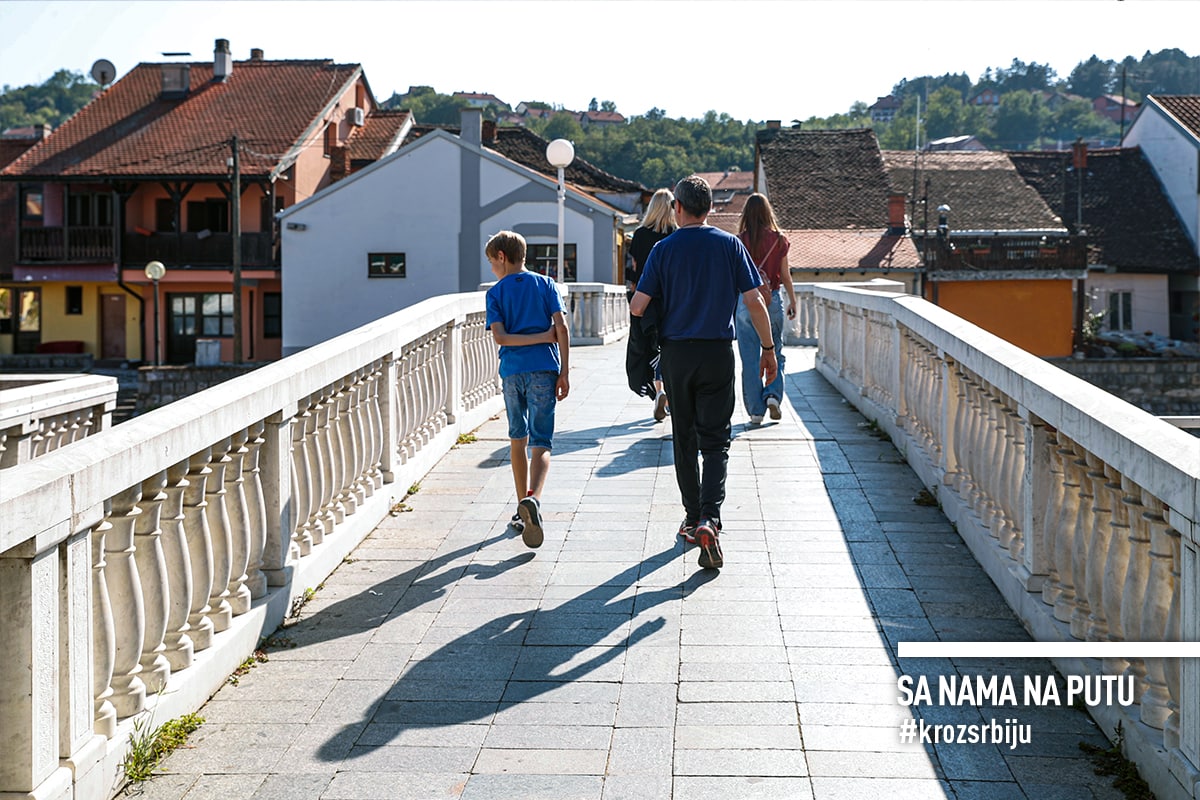
The city with a long history of wars, rich cultural heritage, green areas, parks, and sports. A very lively town, hospitable and forthcoming. It requires some TLC, the broken windows and rugged facades need renovation, but it begs for cleaning above all. Then, it would be restored to its proper glory.
5. Because Tešnjar is a Skadarlija-like area of Valjevo
Or, more specifically, it could be. It seems longer than the Skadarlija of the capital, but derelict. Unfortunately so. It was once a tradesmen and craftsmen district, with oriental features. It was packed with workshops, stores and taverns. It was busy day and night. The daytime was craftsmen’s time – time for pastry, cakes and coffee. At sunset, it was time for strolling and romancing, and the night was reserved for bohemians. But the bustling downtown faded away. Today, it is run-down and crumbling. Most of the houses were built in the XIX century. That’s how they look today too, with only a few having been restored, giving us hope that Tešnjar will not perish after all. There are barely any craftsmen left. Only a few workshops, a couple of old-style taverns and some chairs put out in the street for Sunday’s chit-chat. We wished that the atmosphere of the old bustling district was still there. A sorrowful sight both for the eye and the soul. The old cobblestone has survived – to our relief.
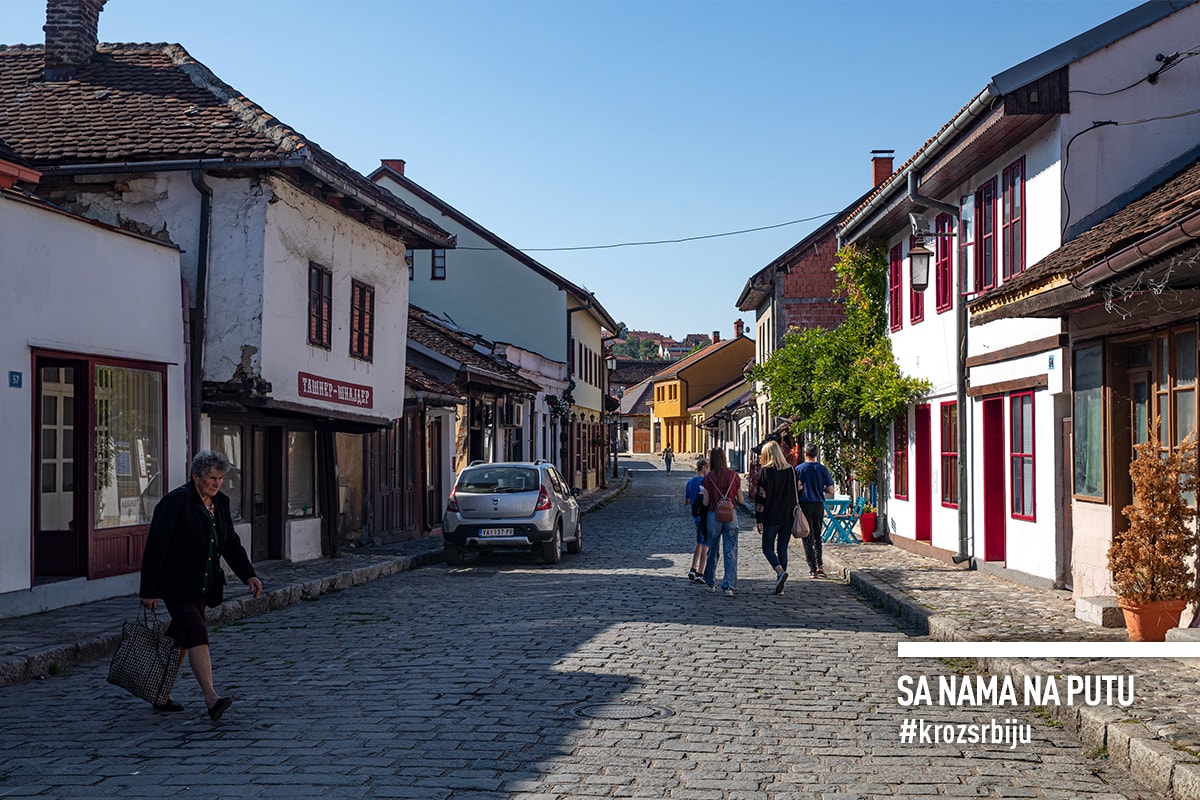
6. Because, on the way there, you can also pay your bills at the petrol station
Our next stop is petrol station Valjevo 2. While refuelling, we find out that it is now possible to pay your monthly utility bills at all NIS Petrol and Gazprom stations quickly and easily, and even on Sundays. Awesome! We pay the bill at the cash register and rush back to the car eager to visit the place where Desanka grew up.
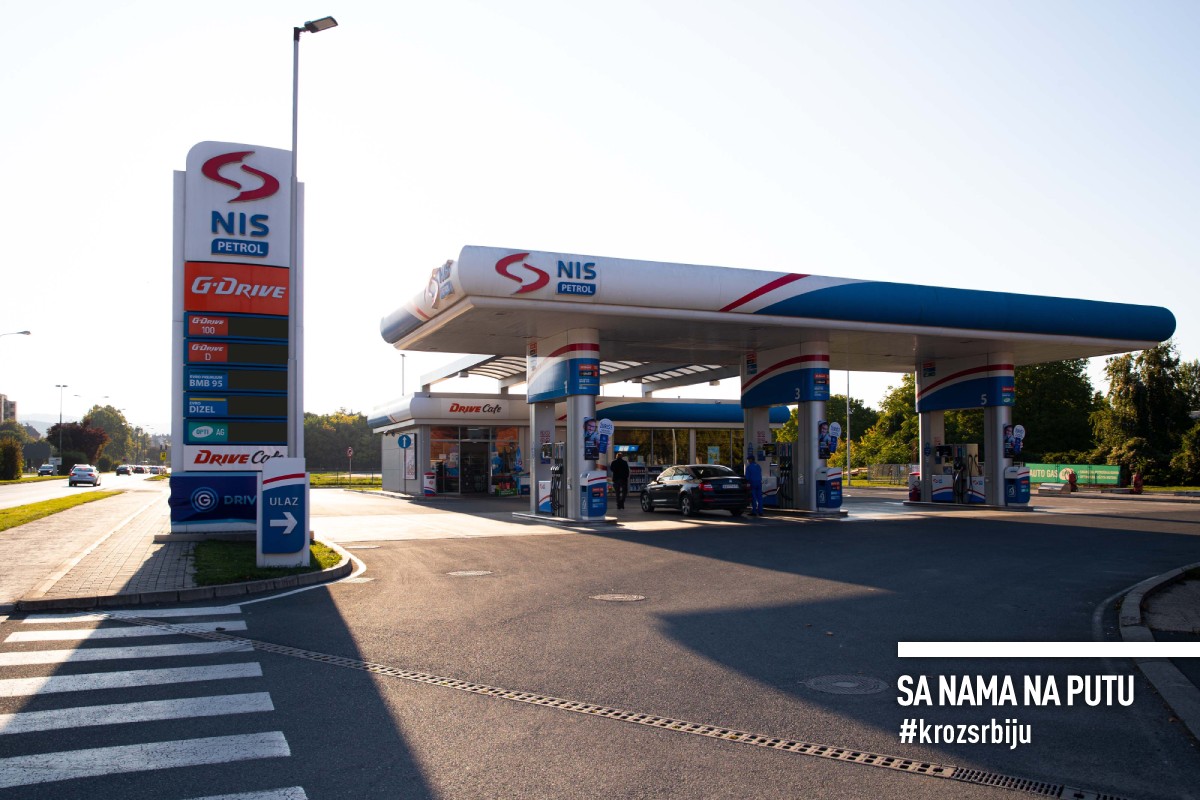
7. Because Desanka spent her childhood in Brankovina
The beloved Serbs are called by their first names only. Everyone knows, there is only one Desanka. There is no direction sign to help us get to Brankovina, a typical Serbian mess-up. Travelling in the direction of Šabac, a sign will bashfully appear in the midst of the junction and, oddly so, on the left side of the road.
Soon after her birth, Desanka’s family moved from the village of Rabrovice to Brankovina, about ten kilometres from Valjevo. And there, this little girl fell in love with nature. Incurably so. She fell in love with the groves, hills, valleys, the river, dandelions, bugs and birds. She talked and spent time with them, her soul conceived her immortal verses. “I was fortunate enough to spend my childhood at the place that allowed me to learn about life in the best and most beautiful ways, devoid of everything false and extraordinary, just as it was for others. At the nature’s well,” Desanka said. Her homeland is her resting place. Today, Brankovina is an open-air cultural and historical complex. You can see the Church of the Holy Archangels, the endowment of the Prota Matija Nenadović, the old and the new school – both Prota’s and Desanka’s schools, the school’s well and the clerk’s office, five sobrašicas (small church houses from the nineteenth century), wooden houses for family gatherings and dining, a replica of the house and the courtyard house of the famous Nenadović family, as well as their graves. Here lies Aleksa, whose decapitated head was stolen by the courageous Valjevo townspeople and buried properly in his homeland.
8. Because the meals are healthier when eaten under the plate trees
And more pleasant too. Especially during hot and windless days. A vast garden under a branching canopy of giant plate trees features wooden tables and benches. The restaurant Platani is next door to the Valjevo brewery. In a typical Serbian style, we order mixed grilled meat, various salads and lepinjice, which could have been a bit fresher. The meat is a bit saltier; it is good, but nothing spectacular. Good enough to quench the hunger. The quick and pleasant service is worthy of a recommendation. We are sure, however, that better meals are served in Valjevo. We’ll look into it the next time.
